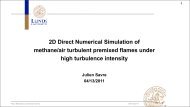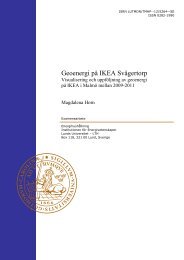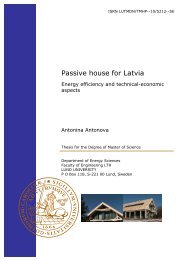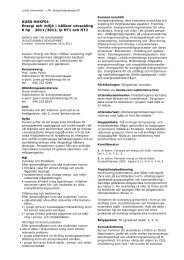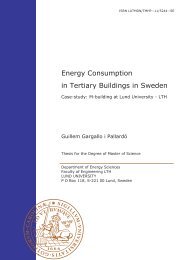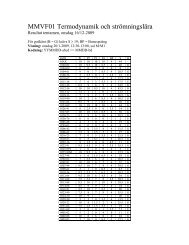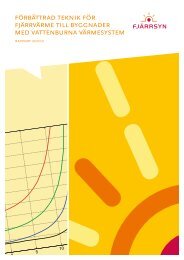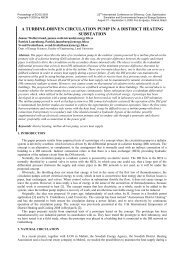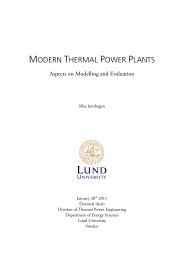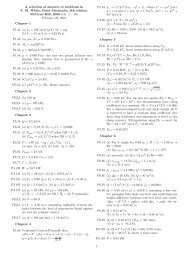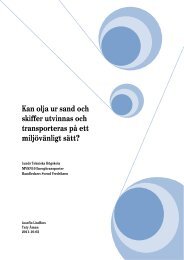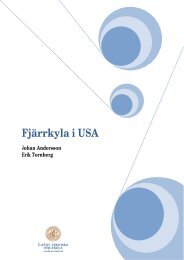Thesis for degree: Licentiate of Engineering
Thesis for degree: Licentiate of Engineering
Thesis for degree: Licentiate of Engineering
Create successful ePaper yourself
Turn your PDF publications into a flip-book with our unique Google optimized e-Paper software.
Figure 2.6: Effective boundary arrangement <strong>for</strong> the coupling <strong>of</strong> FVM and LBM.<br />
The FV model is <strong>for</strong>mulated with adimensionless system and so LBM should also be<br />
converted to a dimensionless system to meet this constraint. The approach to connect the FV<br />
model and LB model at the boundary is by linear interpolation because the variables are not<br />
defined at the same positions in the domain. This gives the following relationships <strong>for</strong> the<br />
velocity.<br />
(2.34)<br />
(2.35)<br />
(2.36)<br />
(2.37)<br />
The procedure would start <strong>of</strong>f, <strong>for</strong> the inner nodes, so that the incoming particle distribution<br />
function f a at time t is used to compute the local density ρ and velocity u or v. For the<br />
boundary nodes all three variables are obtained from the variables <strong>of</strong> the FV model at time t<br />
[26, 28]. Next, all nodes are subject to the collision step. Finally, the inner nodes will per<strong>for</strong>m<br />
the streaming step.<br />
2.4 Previous case studies <strong>of</strong> SOFCs in LBM<br />
Although LBM is a relatively new actor among the numerical modeling methods, some work<br />
has already been carried out on SOFCs. There are some limitations connected to the LBM<br />
that need to be highlighted. These have been detected through previous studies. LBM has<br />
only recently been used as a numerical method <strong>for</strong> transport processes in SOFC and compared<br />
with conventional methods such as FDM, FEM and FVM [24]. According to Joshi et al., there<br />
is still a need <strong>for</strong> a supercomputer to per<strong>for</strong>m the LBM simulations. The method is described<br />
in detail by Joshi et al. [14-16, 23] and a comprehensive discussion <strong>of</strong> the method and various<br />
terms in the LB equation are <strong>of</strong>fered. Hence, the reader is referred to the work <strong>of</strong> Joshi et al.<br />
<strong>for</strong> further discussion.<br />
17



